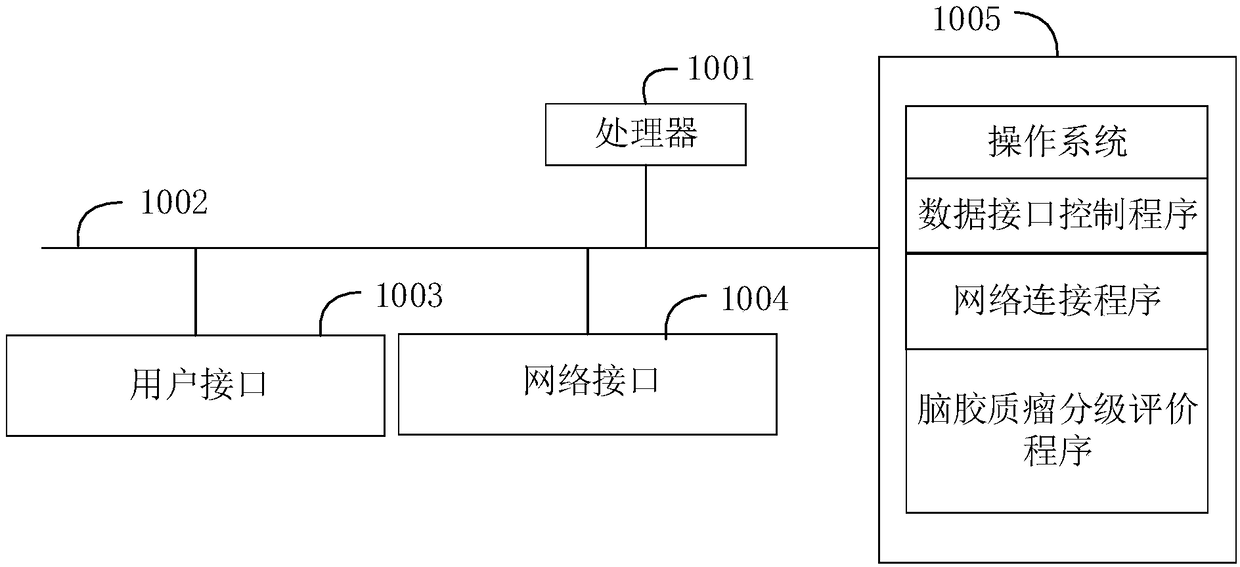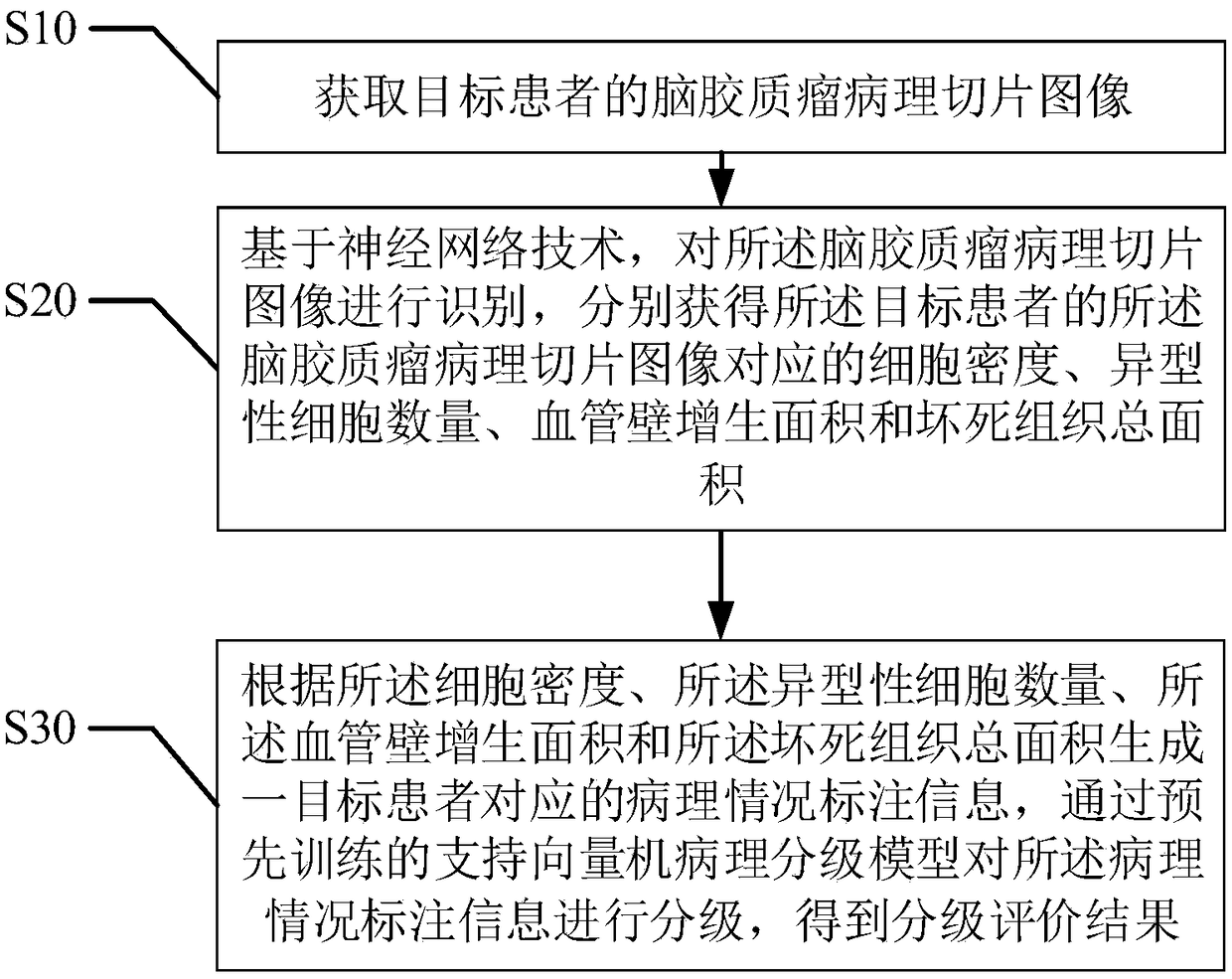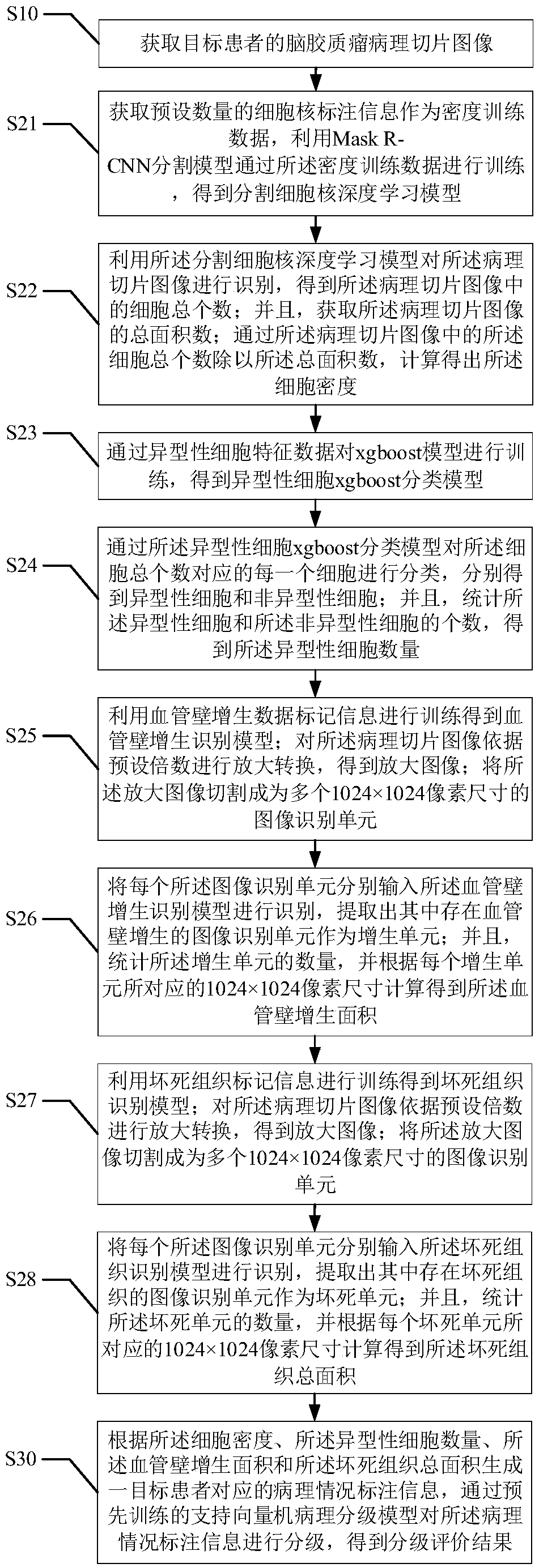A method and device for grading evaluation of brain glioma
A brain glioma, evaluation method technology, applied in the field of brain glioma classification evaluation method and device field, can solve the problems of inability to achieve classification evaluation, heavy workload, timely diagnosis of patients and hidden safety hazards of treatment, etc.
- Summary
- Abstract
- Description
- Claims
- Application Information
AI Technical Summary
Problems solved by technology
Method used
Image
Examples
Embodiment 1
[0054] refer to figure 2 , the first embodiment of the present invention provides a method for grading evaluation of glioma, including:
[0055] Step S10, acquiring the pathological section image of the glioma of the target patient;
[0056] The above mentioned glioma pathological section image is a CT tomographic image of the patient's glioma.
[0057] Step S20, based on the neural network technology, identify the pathological slice image of the glioma, and respectively obtain the cell density, the number of atypia cells, and the hyperplasia of the vessel wall corresponding to the pathological slice image of the glioma of the target patient. area and total area of necrotic tissue;
[0058] At present, manual grading and evaluation of glioma medical images is mainly judged from four aspects: cell density, cell atypia, vascular wall hyperplasia, and necrotic tissue.
[0059] Step S30, generate pathological condition labeling information corresponding to a target patient a...
no. 1 example
[0089] refer to image 3 , the second embodiment of the present invention provides a method for grading evaluation of glioma, based on the above figure 2 In the first embodiment shown, the obtaining of the cell density includes:
[0090] Step S21, obtaining a preset number of cell nucleus labeling information as density training data, using the Mask R-CNN segmentation model to train through the density training data, and obtaining a deep learning model for segmenting cell nuclei;
[0091] Step S22, using the segmented nucleus deep learning model to identify the pathological slice image to obtain the total number of cells in the pathological slice image; and obtain the total area of the pathological slice image; The total number of cells in the slice image is divided by the total area to calculate the cell density.
[0092] As mentioned above, Mask R-CNN is a model that outputs high-quality instance segmentation masks while effectively detecting objects. It is an extensio...
Embodiment 3
[0123] refer to Figure 4 , the third embodiment of the present invention provides a method for grading evaluation of glioma, based on the above figure 2 In the first embodiment shown, after the "obtaining the graded evaluation result", it also includes:
[0124] Step S40, based on the image acquisition device, image acquisition is performed on the operating user who performs the grading evaluation, and an identity authentication image is obtained;
[0125] As mentioned above, the image acquisition device may be a camera, which is used for image acquisition and authentication of doctors.
[0126] Step S50, performing feature location, edge detection and threshold segmentation on the identity authentication image, and extracting facial features in the identity authentication image;
[0127] Step S60, using the pre-trained authentication user image recognition model to identify the facial features corresponding to the identity authentication image to determine whether the ope...
PUM
 Login to View More
Login to View More Abstract
Description
Claims
Application Information
 Login to View More
Login to View More - R&D
- Intellectual Property
- Life Sciences
- Materials
- Tech Scout
- Unparalleled Data Quality
- Higher Quality Content
- 60% Fewer Hallucinations
Browse by: Latest US Patents, China's latest patents, Technical Efficacy Thesaurus, Application Domain, Technology Topic, Popular Technical Reports.
© 2025 PatSnap. All rights reserved.Legal|Privacy policy|Modern Slavery Act Transparency Statement|Sitemap|About US| Contact US: help@patsnap.com



